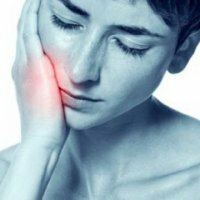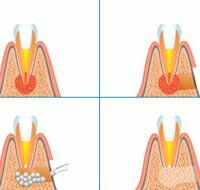Choosing a toothbrush for a child
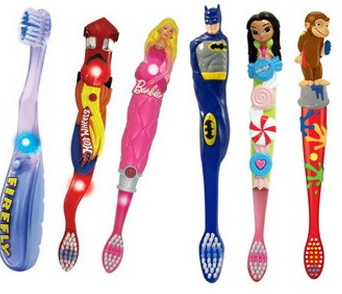 Proper care of the oral cavity of the child from an early age will help prevent the development of a number of diseases.The first teeth, as a rule, begin to erupt at the age of six months.But this does not mean that until this point you should not pay attention to hygiene.
Proper care of the oral cavity of the child from an early age will help prevent the development of a number of diseases.The first teeth, as a rule, begin to erupt at the age of six months.But this does not mean that until this point you should not pay attention to hygiene.
More recently, under the toothbrush for a child meant a small copy of a normal hygienic device for adults.Currently, pharmacies and other specialized outlets have a wide choice of brushes, the design of which takes into account all the features of the structure of the dentoalveolar system of the child.
Please note : , almost half of the products that are offered by retail networks to consumers' attention are fake for well-known brands.In practice, it turns out that many visually appealing toothbrushes for children are made of low-quality materials.
When choosing a hygiene accessory, consider the following factors:
- child's age:
- strength of tooth enamel( depends on age and individual characteristics);
- gum condition( presence or absence of inflammation).
When to buy the first brush for a child?
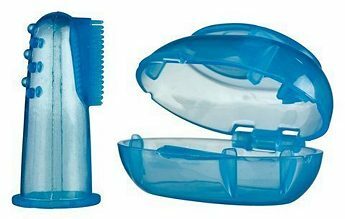 Children's dentists recommend that parents use a special silicone fingertip to clean and massage the gums when the child turns 3 months old.Especially important is a similar massage during the eruption of the first teeth.
Children's dentists recommend that parents use a special silicone fingertip to clean and massage the gums when the child turns 3 months old.Especially important is a similar massage during the eruption of the first teeth.
To maintain the hygiene of the oral cavity of the baby at a high level, you can also use a conventional napkin moistened with boiled water.
Before buying toothbrushes for children, it is recommended to consult a dentist - he will help you choose the model that will suit your child best.
You can start using this hygienic device when the child is 1 year old.Until the age of two, parents should clean the baby's teeth, and then it is necessary to teach the child to carry out this procedure on their own.In order to interest the child, you need to make an element of the game in the process.All children's brushes should have a bright attractive color.Handles of some modern models can change color after a certain period of time;This is a kind of signal that brushing your teeth has been going on for a long time.You can also find models that make sounds when the movements are made in the right direction.

Please note : The product should not have sharp edges, burrs or notches on the plastic.Such types of marriage are characteristic signs of cheap fakes.Such adaptations are simply dangerous.What characteristics do you need to pay attention to?
The main characteristics of a toothbrush are considered to be a handle, a working part and a bristle
Handle
When choosing, you must pay attention to the shape and material of the handle.It is important that the brush does not slip in the child's hand during cleaning.This is usually provided with a rubberized coating or grooved lining, as well as special protective rings.The handle should be relatively long.Coordination of movements in the baby is far from perfect, and the movements of the hands while brushing the teeth are somewhat more sweeping.With a long handle it will be much more convenient!
Well, if the handle shows the characters of the cartoons.Such an accessory the child will use with pleasure, and the daily necessary procedure will turn into a fascinating occupation.In this case, it is undesirable that the brush has many volume elements of "decor".Such devices are not always convenient to hold, especially if the hand is wet.
Working part
 The size of the head( working part) of the first toothbrushes should be minimal so that the baby does not experience discomfort during cleaning and does not accidentally injure the mucous membranes of the cheeks.The optimal size of the model head for the smallest( from one year to two) does not exceed 20 mm.As the child grows up, brushes with larger working parts can be purchased.For children from three years and older, it is advisable to choose models whose heads have a length of up to 23 mm.
The size of the head( working part) of the first toothbrushes should be minimal so that the baby does not experience discomfort during cleaning and does not accidentally injure the mucous membranes of the cheeks.The optimal size of the model head for the smallest( from one year to two) does not exceed 20 mm.As the child grows up, brushes with larger working parts can be purchased.For children from three years and older, it is advisable to choose models whose heads have a length of up to 23 mm.
Regardless of the age of the child, you need to choose models with rounded heads.This form virtually eliminates the possibility of damage to the mucosa.
Note : the joint of the head and the handle must be flexible;Otherwise the child will not be able to cleanse thoroughly all the surfaces of the teeth, especially the chewing.
Bristles
It is necessary to pay attention to the material and the degree of stiffness of the bristles.Models with natural hairs should be avoided, since they are particularly actively propagated by bacteria, and pathogenic microflora in childhood very often becomes the cause of stomatitis.In addition, the material of natural origin is characterized by increased brittleness, and pointed hairs can damage the gums and cheeks.It should be noted that in the sale of toothbrushes of this kind are relatively rare.
Remember : this is the case when the statement "all natural is good" ceases to work. ..
The brushes with the length of synthetic villi within 11 mm provide the best quality of cleaning the enamel surfaces and interdental spaces.It is preferable to choose tools with a flat bristle surface( the same height), since they provide uniform pressure on all surfaces.
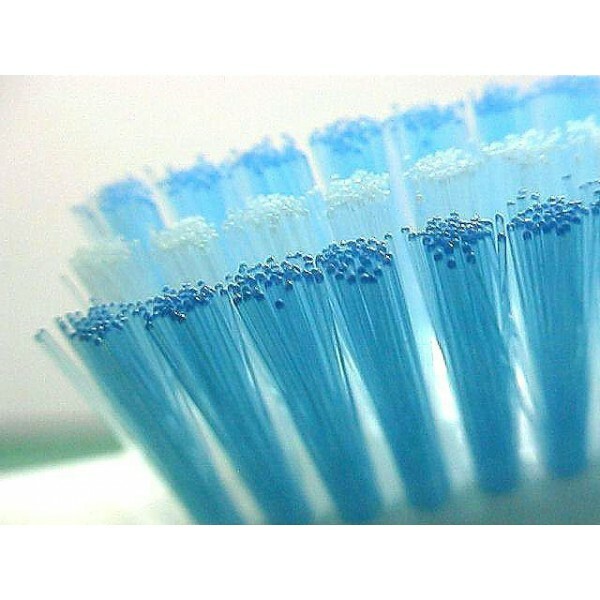 For young children, the most soft( but resilient) bristles are most preferable, since babies can not yet control the force of pressing the brush against the gums and teeth.Rigid hairs sometimes cause increased erasability of the fragile enamel of the baby teeth and inflammatory diseases of the gums as a result of permanent trauma to soft tissues.
For young children, the most soft( but resilient) bristles are most preferable, since babies can not yet control the force of pressing the brush against the gums and teeth.Rigid hairs sometimes cause increased erasability of the fragile enamel of the baby teeth and inflammatory diseases of the gums as a result of permanent trauma to soft tissues.
When the baby's diet includes the same products as the adult's diet, an accessory with a more resilient( stiff) bristle will be required.Models with soft hairs are difficult to clean interdental spaces, in which, for example, meat fibers are stuck.
For children whose interdental spaces are somewhat higher than normal, as well as for teenagers whose bite has to be corrected by means of bracket systems, special models with V-shaped beams of bristles can be recommended.
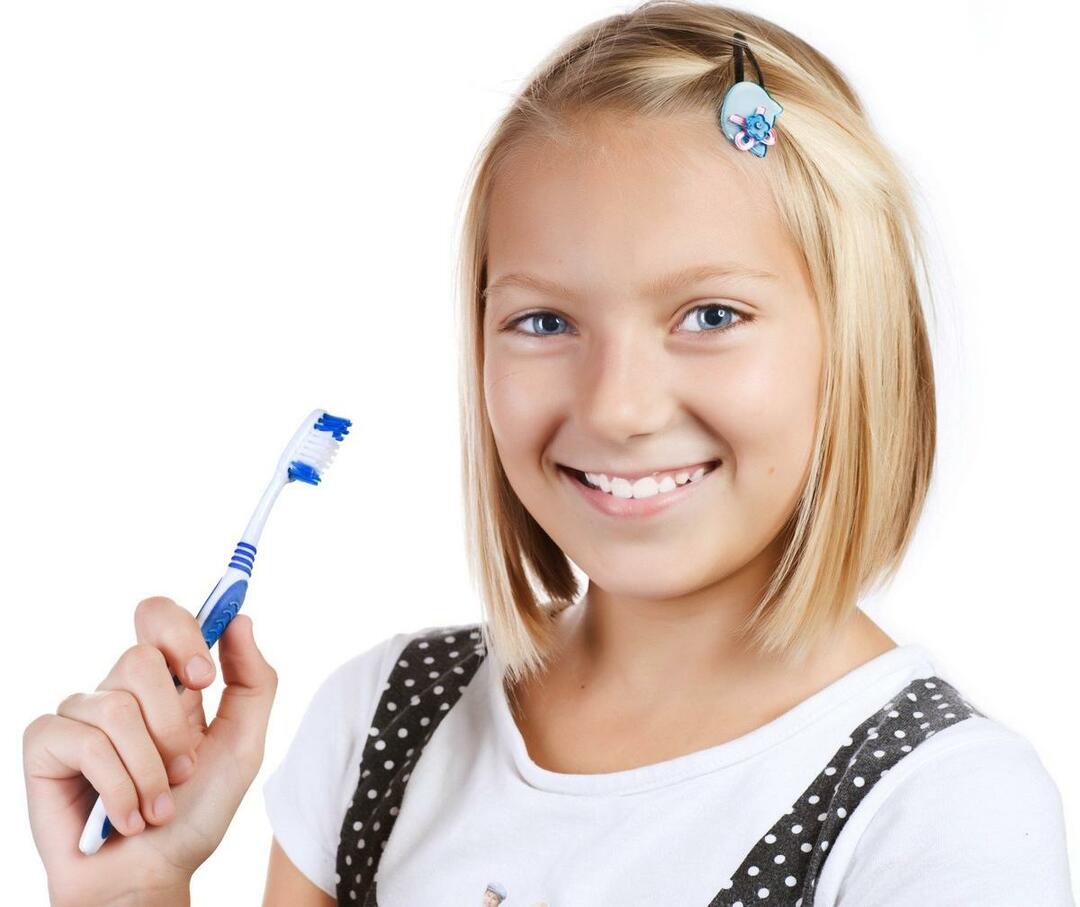 Important: according to experts, the optimal location of the bristles in 3-4 rows.
Important: according to experts, the optimal location of the bristles in 3-4 rows.
In the senior preschool and early school age, when the bite begins to change( i.e., the first permanent teeth appear), it is advisable to purchase a model for the child whose bristles will be the same as those on adults.The main thing is that the working part should have more modest dimensions.
How often is it necessary to change the brush?
The toothbrush must be changed at least once every three months.If it is visually noticeable that the bristles have thinned out or stuck out in different directions( this is very typical for cheap samples), then replacement should be made earlier.According to the recommendations of pediatricians and children's dentists, you also need to buy a new brush after the infectious disease the child has suffered.
How to teach a child to regular brushing?
Most children do not want to go to the bathroom twice a day and do hygiene procedures there - there are much more interesting activities.Parents are recommended first of all to show the child an example, that is, to brush his teeth regularly.Children tend to be like adults in everything, so in this way you can form a useful habit for your child.
Well, if the toothpaste will taste good.The truth should be noted: the market mass of a variety of products with flavors and flavors, but, unfortunately, not all of them are absolutely safe.When choosing a paste, you should also pay attention to its purpose( hygienic or curative-prophylactic).In this case, it is recommended to consult a pediatric dentist.
For kids, you can come up with a story about teeth, brush and paste, and invite the child to become a direct participant in this fairy tale.
Electric toothbrush for children
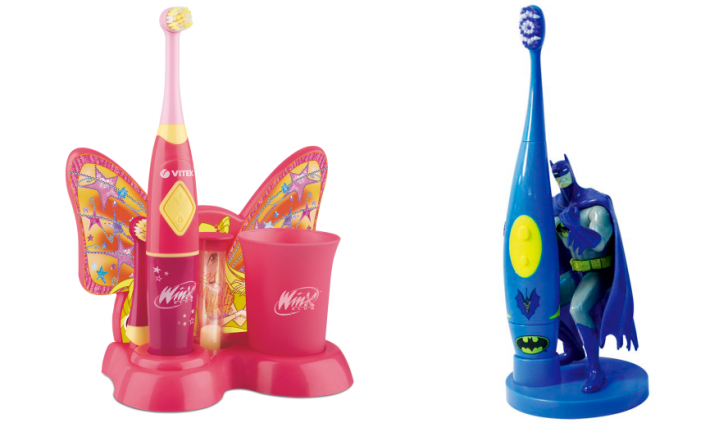
Electric models have come into our life quite recently, but have already gained popularity among consumers.
Electric brushes for children have their pros and cons.First of all, it should be taken into account that suspiciously cheap models, as a rule, are of poor quality.They quickly break down, and during operation the movement of the working part may not be smooth enough.Sometimes counterfeits are simply traumatic.
The head of a good electric brush carries out a return, circular and vibrating motion.Cleaning teeth with this innovative device takes less energy and time from the child, making the hygienic procedure less tiring and more fun.The movement of the bristles in different directions guarantees the quality removal of plaque from all surfaces.Undoubtedly, the use of such devices provides a higher level of oral hygiene than with traditional "manual" cleaning.But it must be taken into account that the enamel of the milk teeth is relatively thin and brittle, so an overly active mechanical action can lead to its thinning.
Electric models from the leading European producers of the working part are very delicate.A special colored field can be present on the head, allowing to measure the optimum amount of paste.In order to interest the child, a number of children's models are supplied with bright protective caps in the form of amusing little animals.The handles of the models are ergonomically shaped, and their sizes are adapted for the small palm of the child.Studies conducted by child psychologists have confirmed that it is the electrical models that provide the motivation for the child to perform routine hygiene procedures.
The application of models of this category is acceptable from the age of 2-3 years, but only under the supervision of the parents.Having bought a child such an accessory, it is necessary, at least, at first to watch carefully how cleaning is carried out.It is important to ensure that children do not leave the working part for a long time in one place and do not press it excessively tightly to the gums.
Note: a number of dentists are of the opinion that it is advisable to buy an electric brush for a child who already has an occlusion, that is, at the age of 6-8, after the beginning of eruption of permanent teeth. Special additional attachments should not be used until 8-12 years.Adolescents who already have a bite( ie, from the age of 13-14) can use the usual "adult" electric model.
Buying an electric brush makes sense only when the child has acquired the minimum necessary skills in handling a conventional hygiene accessory.In addition, manual skills acquired with the use of the usual model, contribute to improving fine motor skills and overall development of the baby.
Ionic baby toothbrushes
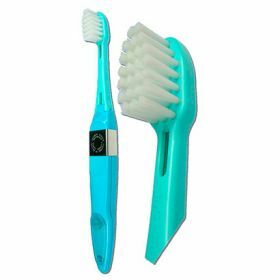 Nowadays, innovative "ion" models have appeared on sale.These unique devices additionally provide a change of negative charge in the oral cavity to the opposite, so that the level of acidity in the mouth is normalized.Studies have confirmed that ionic models increase the positive effect of conventional toothpastes.
Nowadays, innovative "ion" models have appeared on sale.These unique devices additionally provide a change of negative charge in the oral cavity to the opposite, so that the level of acidity in the mouth is normalized.Studies have confirmed that ionic models increase the positive effect of conventional toothpastes.
Note : Ion brushes have contraindications.Before buying, carefully read the annotation, or better - consult your doctor.
Specialists believe that the active participation of parents in the process of cleaning teeth makes sense, until the child turns 7 years old, that is, more or less careful control is needed only for preschoolers.Older children obsessive attention of the elders to the usual procedure can only hurt from a psychological point of view.
If you want to choose the right toothbrush for your child, we recommend that you also view this video review:
Plisov Vladimir, dentist

